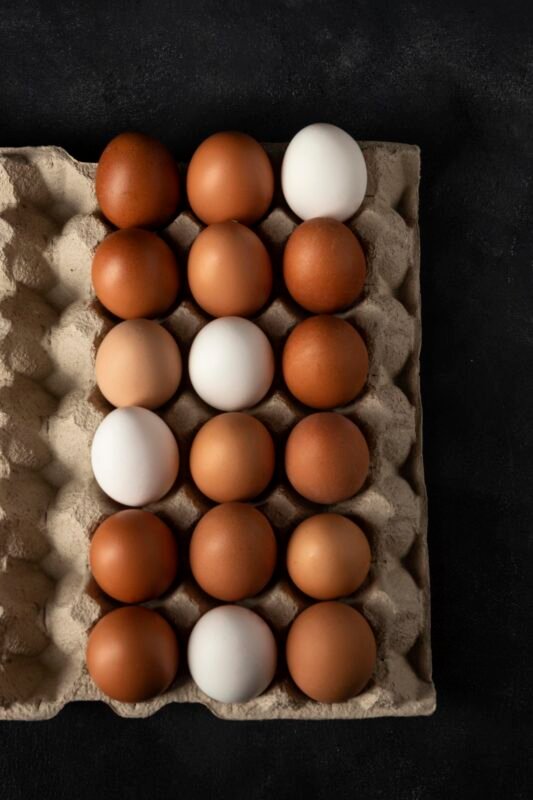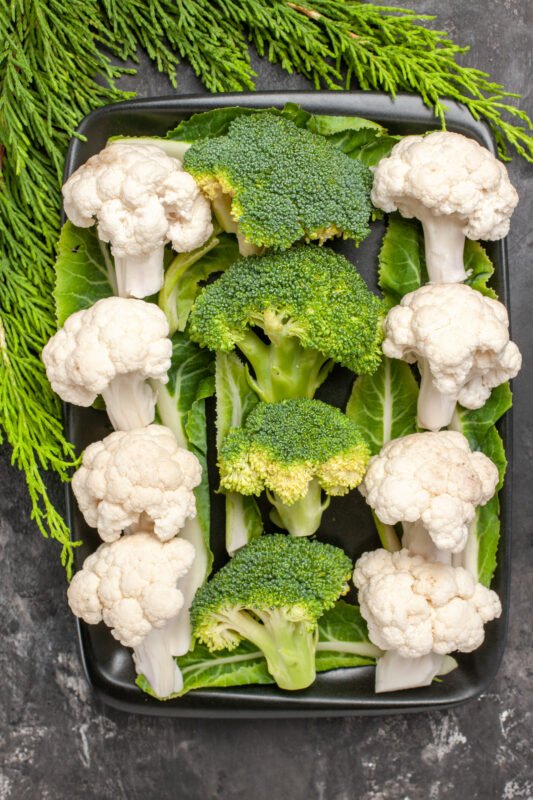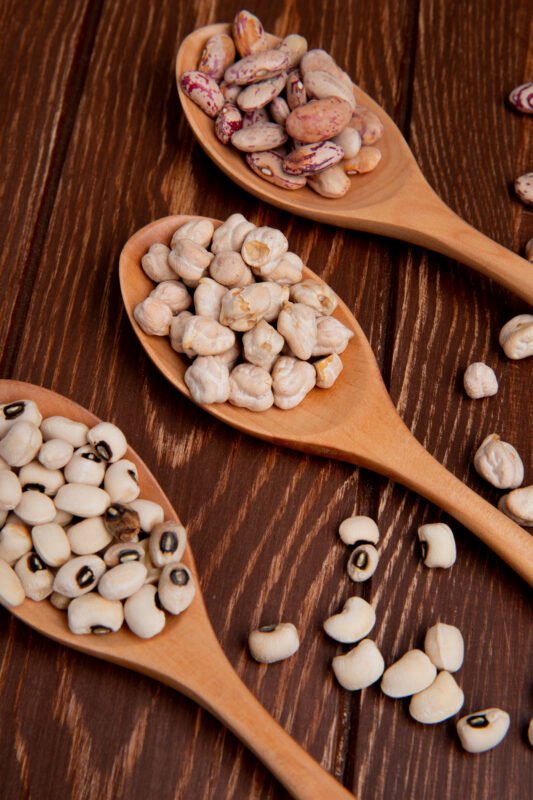A single large egg contains approximately 147 mg of choline, with most of it concentrated in the yolk. This single egg provides about 25% of an adult’s recommended daily intake.
Choline in eggs
Did you know that a single egg contains more choline than almost any other commonly eaten food? This powerful nutrient, often overlooked in nutrition discussions, plays a crucial role in brain health, liver function, and even the development of unborn babies.
Yet despite its importance, over 90% of Americans don’t get enough choline in their diets. This widespread deficiency affects everything from memory and mood to cardiovascular health and athletic performance.
For egg farmers and consumers alike, understanding choline transforms how we view eggs. These nutritional powerhouses aren’t just a good source of protein. They’re one of nature’s most concentrated sources of an essential nutrient that most people desperately need.
Whether you’re raising chickens for egg production, planning your family’s nutrition, or simply curious about what makes eggs so nutritious, this comprehensive guide reveals everything you need to know about choline in eggs.
You’ll discover what choline actually does in your body, why certain people need extra amounts, and how eggs compare to other choline sources. By the end, you’ll understand why eggs deserve their reputation as one of the most nutritious foods on the planet.

What Is Choline?
Choline is an essential nutrient that your body needs for numerous vital functions. While your liver can produce small amounts of choline, you must obtain most of it through your diet to maintain optimal health.
Officially recognized as an essential nutrient by the Institute of Medicine in 1998, choline is a member of the B-vitamin family. However, it has unique properties that distinguish it from other B vitamins, both structurally and functionally.
At the molecular level, choline serves as a precursor for several important compounds in your body. It’s particularly crucial for producing acetylcholine, a neurotransmitter involved in memory, mood, muscle control, and other brain and nervous system functions.
Choline also plays a structural role in cell membranes throughout your body. It’s a key component of phosphatidylcholine and sphingomyelin, two phospholipids that maintain the integrity and signaling capabilities of cell membranes.
Your liver depends heavily on choline for proper fat metabolism. Without adequate choline, fats can accumulate in the liver, potentially leading to non-alcoholic fatty liver disease even in people who don’t consume excess calories or alcohol.
The nutrient participates in methylation reactions, biochemical processes that affect gene expression, DNA repair, and the production of various compounds your body needs. These methylation processes influence everything from cardiovascular health to detoxification.
During fetal development, choline is absolutely critical. It affects brain development, neural tube formation, and the creation of memory centers in the developing brain. Adequate maternal choline intake during pregnancy can have lifelong impacts on a child’s cognitive function.
Despite its importance, choline deficiency remains surprisingly common. Unlike deficiencies of vitamins like vitamin C or vitamin D that produce obvious symptoms, inadequate choline intake often goes unnoticed until health problems emerge.
Benefits of Choline
The health benefits of adequate choline intake extend across nearly every system in your body. Understanding these benefits helps explain why eggs, as a concentrated choline source, deserve a prominent place in a healthy diet.
Brain health and cognitive function depend significantly on choline. As a precursor to acetylcholine, this nutrient directly impacts memory formation, learning ability, and overall cognitive performance. Studies show that higher choline intake correlates with better memory and reduced cognitive decline.
Liver function relies on choline for proper fat metabolism. Choline helps transport fats out of the liver, preventing fat accumulation that can lead to fatty liver disease. People with inadequate choline intake show increased risk of liver damage and dysfunction.
Cardiovascular health benefits from adequate choline through multiple mechanisms. The nutrient helps convert homocysteine, a potentially harmful amino acid, into methionine. Elevated homocysteine levels are associated with increased cardiovascular disease risk.
Nervous system function throughout your body depends on choline-derived acetylcholine. This neurotransmitter enables communication between nerves and muscles, affecting everything from voluntary movement to heart rate and digestion.
Athletic performance and muscle function benefit from adequate choline status. The nutrient supports muscle contractions, coordination, and even endurance. Some research suggests that choline supplementation may reduce fatigue during intense physical activity.
Fetal brain development represents one of choline’s most critical roles. Adequate maternal choline intake during pregnancy supports neural tube closure, brain structure development, and the formation of the hippocampus, the brain’s memory center.
Inflammation reduction may result from adequate choline intake. Research indicates that choline helps regulate inflammatory responses in the body, potentially reducing chronic inflammation associated with various diseases.
Gene expression and epigenetics are influenced by choline through its role in methylation reactions. These processes affect how genes are turned on or off, potentially impacting disease risk and overall health across the lifespan.
Choline and Health
The relationship between choline intake and overall health encompasses both disease prevention and optimal functioning. Scientific research continues to reveal new connections between this essential nutrient and various health outcomes.

Cognitive decline and dementia show strong associations with choline intake. Studies following people over many years demonstrate that those with higher dietary choline intake experience slower cognitive decline and reduced risk of dementia in later life.
Fatty liver disease, particularly non-alcoholic fatty liver disease (NAFLD), is directly linked to inadequate choline. When choline intake falls short, fats accumulate in liver cells because the nutrient needed to transport them out is missing.
Women are particularly vulnerable to choline-related fatty liver issues due to hormonal differences. Estrogen helps the body produce more choline, but postmenopausal women and those taking certain medications may face an increased risk without adequate dietary choline.
Neural tube defects in developing babies can result from inadequate maternal choline intake. While folic acid receives more attention for neural tube defect prevention, research shows choline plays an equally important role in proper neural tube closure.
Mental health conditions, including anxiety and mood disorders, may be influenced by choline status. As a precursor to acetylcholine, adequate choline supports neurotransmitter balance that affects mood regulation and stress response.
Muscle damage during intense exercise can be exacerbated by low choline levels. Athletes and very active individuals may need higher choline intake to support increased demand from muscle function and repair.
Cancer risk, particularly breast cancer, shows some association with choline metabolism in research studies. However, this relationship is complex and not fully understood, with both protective and potentially harmful mechanisms being investigated.
Cardiovascular disease risk factors, including inflammation and homocysteine level, are modulated by adequate choline intake. The nutrient’s role in methylation helps maintain healthy homocysteine levels, supporting cardiovascular health.
Do Eggs Have Choline?
Eggs stand out as nature’s most concentrated and bioavailable source of dietary choline. Understanding just how much choline eggs provide helps explain why they’re considered a nutritional powerhouse.
A single large egg contains approximately 147 milligrams of choline, with almost all of it concentrated in the yolk. This represents roughly 27% of the adequate intake recommendation for adult women and 21% for adult men from just one egg.
The bioavailability of choline from eggs is exceptionally high. Your body can absorb and utilize the choline from eggs more efficiently than from many other food sources. This makes eggs particularly valuable for meeting your choline needs.
Egg yolks specifically contain choline, with egg whites providing negligible amounts. People who consume only egg whites to reduce calorie or cholesterol intake miss out on this vital nutrient, along with many other important compounds.
Different egg sizes contain varying amounts of choline. A medium egg provides about 126 mg, while an extra-large egg delivers approximately 168 mg. These differences matter when calculating your total daily choline intake.
Cooking methods don’t significantly affect the choline content of eggs. Whether you scramble, boil, fry, or poach your eggs, the choline remains stable and available for your body to absorb.
Comparing eggs to other foods reveals their exceptional choline density. You would need to eat about 3 cups of broccoli or 5 ounces of chicken breast to match the choline in a single egg.
For egg farmers, understanding eggs’ nutritional value adds another dimension to their product. You’re not just producing food but delivering one of the most important nutrients many people struggle to obtain in adequate amounts.
The relationship between egg consumption and choline status is clear in research. Studies consistently show that people who regularly eat eggs have significantly higher choline intakes and better choline status than those who don’t.
How Much Choline Do I Need?
Daily choline requirements vary based on age, sex, and life stage. Understanding these recommendations helps you assess whether your diet provides adequate amounts of this essential nutrient.
The Adequate Intake (AI) for choline was established by the Institute of Medicine based on the amount needed to prevent liver damage. For adult men, the AI is 550 mg per day. Adult women need 425 mg daily.
These baseline recommendations increase during pregnancy and lactation. Pregnant women need 450 mg of choline daily, while breastfeeding mothers require 550 mg per day to support both their own needs and their baby’s development.
Children’s choline needs scale with age and body size. Infants up to 6 months need 125 mg daily, increasing to 150 mg for ages 7 to 12 months. Toddlers ages 1 to 3 require 200 mg, while children 4 to 8 need 250 mg daily.
Older children and adolescents have increasing choline requirements. Ages 9 to 13 need 375 mg daily, while teenagers 14 to 18 require 400 mg for females and 550 mg for males.
Upper limits for choline intake have been established to prevent potential side effects. Adults should not regularly exceed 3,500 mg per day, though reaching this level through food alone is extremely difficult.
Most people fall short of adequate choline intake. Research indicates that over 90% of Americans don’t consume enough choline to meet the AI recommendations. This widespread inadequacy has significant health implications.
Assessing your choline intake requires looking at your entire diet. While eggs are the richest source, other foods contribute to your total intake. Tracking your consumption for several days can reveal whether you’re meeting recommendations.
Individual variation in choline needs exists based on genetics, health status, and other factors. Some people may need more than the standard recommendations, while others might maintain adequate status on somewhat lower intakes.
Choline for Pregnant Women
Pregnancy dramatically increases choline requirements due to the developing baby’s needs. Understanding why pregnant women need extra choline and how to obtain it supports both maternal and fetal health.
Fetal brain development depends critically on adequate maternal choline intake. The nutrient supports the formation and growth of the hippocampus, the brain region responsible for memory and learning throughout life.

Neural tube formation, the process by which the baby’s brain and spinal cord develop, requires adequate choline alongside folate. Research shows that mothers with higher choline intake have babies with reduced risk of neural tube defects.
The recommended intake for pregnant women is 450 mg of choline daily. However, many experts believe this may be too low, with some research suggesting 930 mg daily provides optimal benefits for fetal brain development.
Most prenatal vitamins contain little to no choline. A survey found that only about 5% of prenatal supplements on the market contain any choline, and those that do typically provide only 10 to 55 mg, far below daily needs.
Meeting choline needs during pregnancy often requires deliberate dietary planning. Eating two to three eggs daily provides substantial choline, but variety in choline sources ensures adequate intake along with other important nutrients.
The timing of choline intake during pregnancy matters. Third-trimester intake appears particularly important for fetal brain development, though adequate intake throughout pregnancy supports various developmental processes.
Vegetarian and vegan pregnant women face particular challenges meeting choline needs since many plant foods contain limited amounts. These women may need to be especially strategic about including choline-rich plant foods or considering supplementation.
Long-term benefits of adequate prenatal choline extend into childhood and beyond. Studies show that children whose mothers had higher choline intake during pregnancy perform better on memory tests and show enhanced attention and information processing.
People with Certain Genetic Alterations
Genetic variations can dramatically affect individual choline requirements. Understanding these genetic factors helps explain why some people need significantly more choline than standard recommendations suggest.
The MTHFR gene variation affects methylation processes in the body. People with certain MTHFR variants have reduced ability to produce choline endogenously, meaning they depend more heavily on dietary sources to meet their needs.
Women with MTHFR variants face a particularly high risk of choline inadequacy during pregnancy. These genetic alterations increase the likelihood of developing fatty liver and other complications when choline intake is insufficient.
The PEMT gene influences how efficiently the body produces phosphatidylcholine, a choline-containing compound. Variations in this gene, particularly common in premenopausal women, can increase dietary choline requirements substantially.
Approximately 44% of the population carries at least one variant of the PEMT gene that reduces choline synthesis. People with these variants show faster depletion of choline stores when following a low-choline diet.
Genetic testing can reveal whether you carry variants affecting choline metabolism. While not routinely performed, testing for SNPs (single-nucleotide polymorphisms) in choline-related genes can inform personalized nutrition recommendations.
People with these genetic variations may need 50% to 100% more choline than standard recommendations. For someone with certain variants, this could mean requiring 700 to 850 mg daily instead of the typical 425 to 550 mg.
Symptoms of inadequacy in genetically susceptible individuals may appear even with an intake that would be adequate for others. Fatty liver, muscle damage, and cognitive issues can develop despite consuming amounts that meet standard recommendations.
The interaction between genes and diet illustrates the importance of personalized nutrition. What’s adequate for one person may be insufficient for another due to genetic differences affecting nutrient metabolism and requirements.
Patients Requiring Total Parenteral Nutrition
Total parenteral nutrition (TPN) provides complete nutritional support through intravenous feeding when patients cannot eat normally. Choline becomes particularly critical in these medical situations.
TPN solutions historically lacked adequate choline content. This omission led to the recognition of choline as essential when TPN patients developed severe fatty liver disease that resolved only with choline addition.
Patients on long-term TPN face a high risk of choline deficiency. Without dietary intake and with limited endogenous production, choline stores can become depleted within weeks, leading to liver dysfunction and other complications.
The liver damage in TPN patients without adequate choline manifests as fatty infiltration progressing to more severe liver disease. This condition, called TPN-associated liver disease, can be prevented with proper choline provision.
Choline requirements for TPN patients may exceed those for healthy individuals eating normally. The stress of illness, increased metabolic demands, and lack of dietary choline all contribute to higher needs in this population.
Modern TPN formulations increasingly include choline to prevent deficiency complications. However, the optimal amount and form of choline for TPN patients continues to be researched and refined.
Premature infants receiving TPN are especially vulnerable to choline deficiency. Their limited endogenous choline production, combined with high demands for growth and development, makes adequate choline provision crucial.
Monitoring choline status in TPN patients helps prevent complications. Blood tests measuring choline and related metabolites can identify deficiency before severe liver damage occurs.
The TPN patient population helped establish choline as truly essential. The dramatic improvements seen when choline was added to TPN solutions provided clear evidence of this nutrient’s critical role in human health.
Table of Contents
Use this comprehensive table to navigate quickly to any section of this guide:
| Section | Topic | Key Focus |
|---|---|---|
| 1 | Introduction | Choline importance and deficiency prevalence |
| 2 | What Is Choline? | Essential nutrient definition and functions |
| 3 | Benefits of Choline | Brain, liver, and overall health benefits |
| 4 | Choline and Health | Disease prevention and health outcomes |
| 5 | Do Eggs Have Choline? | Eggs as the best dietary source |
| 6 | How Much Choline Do I Need? | Daily requirements by age and sex |
| 7 | Choline for Pregnant Women | Increased needs during pregnancy |
| 8 | People with Certain Genetic Alterations | Genetic factors affecting choline needs |
| 9 | Patients Requiring Total Parenteral Nutrition | Special medical considerations |
| 10 | Choline Intakes and Status | Current consumption patterns |
| 11 | Sources of Choline | Dietary sources overview |
| 12 | Choline and Healthful Diets | Food comparison table |
| 13 | Foods With Choline | Detailed breakdown by food category |
| 13.1 | – Poultry | Chicken and turkey choline content |
| 13.2 | – Eggs | The ultimate choline powerhouse |
| 13.3 | – Shrimp | Seafood choline sources |
| 13.4 | – Cruciferous Vegetables | Plant-based choline options |
| 13.5 | – Legumes | Beans and lentils for choline |
| 13.6 | – Potatoes | Surprising choline contributor |
| 14 | Conclusion | Practical takeaways and action steps |
Choline Intakes and Status
Understanding current choline intake patterns reveals a significant public health concern. Most people consume far less choline than recommended, which can have potentially serious health implications.
National survey data from the United States shows that only about 8% of Americans meet the adequate intake recommendations for choline. This means over 90% of the population may be consuming insufficient amounts.
The average choline intake among American adults ranges from 260 to 340 mg per day, falling well short of the 425 to 550 mg recommendations. Women generally have lower intakes than men, partly because they consume fewer calories overall.
Pregnant and breastfeeding women show particularly concerning intake patterns. Research indicates that fewer than 10% of pregnant women consume adequate choline, despite their increased needs during this critical period.
Age-related differences in choline intake reflect changing dietary patterns across the lifespan. Older adults often have lower choline intake due to reduced overall food consumption, whereas younger people’s intake is affected by modern eating habits.
Dietary patterns strongly influence choline status. People who regularly eat eggs, meat, and dairy products generally have higher intakes than those following vegetarian or vegan diets without strategic planning.
Biomarkers of choline status, including plasma choline, betaine, and related metabolites, reveal that suboptimal status is widespread. Low biomarker levels indicate that inadequate intake is translating into compromised choline status.
The gap between recommendations and actual intake represents a significant nutritional challenge. Closing this gap requires both individual dietary changes and potentially broader public health interventions.
Awareness of choline and its importance remains low among the general public. Unlike well-known nutrients like vitamin C or calcium, choline isn’t commonly discussed in nutrition education or food marketing.
Sources of Choline
Choline is available from both animal and plant food sources, though concentrations vary dramatically. Understanding which foods provide substantial amounts of choline helps plan diets that meet choline needs.
Animal products generally provide the highest concentrations of choline. Eggs, liver, meat, poultry, and fish all deliver significant amounts, with eggs particularly outstanding due to their choline density and versatility.
Plant foods contain choline, but typically in lower concentrations than animal products. However, certain plant foods, including cruciferous vegetables, beans, nuts, and whole grains, can contribute meaningfully to total intake.
The form of choline varies across food sources. Animal products tend to provide choline mainly as phosphatidylcholine and sphingomyelin, while plant foods often contain free choline and other forms.
Bioavailability differences exist among choline forms and sources. The choline in eggs appears to be particularly well absorbed and utilized by the body compared to some other sources.
Processed foods generally contain less choline than whole foods. Refining and processing often reduce choline content, so understanding whole foods for adequate intake.
Supplements containing choline are available, but aren’t necessary for most people who eat a varied diet including eggs and other choline-rich foods. Dietary sources provide choline along with other beneficial nutrients.
Combining choline sources throughout the day helps meet requirements. Eating eggs for breakfast, having a salad with chicken or shrimp for lunch, and including vegetables with dinner creates a pattern that naturally provides adequate choline.
For egg farmers, this information highlights the unique nutritional value of your product. Eggs aren’t just one choline source among many but truly the most practical and effective way for most people to meet their needs.
Choline and Healthful Diets
Incorporating adequate choline into a balanced, healthful diet supports overall nutrition while meeting this essential nutrient’s requirements. The following table shows the choline content of various foods per standard serving.
| Food | Serving Size | Choline Content (mg) | % Daily Value* |
|---|---|---|---|
| Beef liver, cooked | 3 ounces | 356 | 65% |
| Egg, hard-boiled | 1 large | 147 | 27% |
| Beef, top round | 3 ounces | 117 | 21% |
| Soybeans, roasted | 1/2 cup | 107 | 19% |
| Chicken breast, cooked | 3 ounces | 72 | 13% |
| Beef, ground, 93% lean | 3 ounces | 72 | 13% |
| Cod fish, cooked | 3 ounces | 71 | 13% |
| Shiitake mushrooms, cooked | 1/2 cup | 58 | 11% |
| Red potatoes, baked | 1 large | 57 | 10% |
| Wheat germ, toasted | 1 ounce | 51 | 9% |
| Kidney beans, canned | 1/2 cup | 45 | 8% |
| Quinoa, cooked | 1 cup | 43 | 8% |
| Milk, 1% fat | 1 cup | 43 | 8% |
| Brussels sprouts, cooked | 1/2 cup | 32 | 6% |
| Broccoli, cooked | 1/2 cup | 31 | 6% |
| Cottage cheese, low-fat | 1/2 cup | 26 | 5% |
| Cauliflower, cooked | 1/2 cup | 24 | 4% |
| Peanut butter | 2 tablespoons | 20 | 4% |
Daily Value based on 550 mg for adult men; percentages would be higher based on the 425 mg recommendation for women.
This table demonstrates why eggs deserve special attention in nutrition planning. While other foods contribute choline, few match eggs’ combination of high choline content, affordability, versatility, and convenience.
Building meals around choline-rich foods naturally supports adequate intake. Starting the day with eggs provides a substantial choline boost, while including vegetables, legumes, and modest amounts of meat throughout the day helps meet total needs.
Vegetarian diets can provide adequate choline but require more careful planning. Eggs, for those who eat them, plus liberal amounts of vegetables, beans, nuts, and whole grains, help vegetarians meet requirements.
Vegan diets present the greatest challenge for choline intake. Plant foods contain choline, but meeting the adequate intake through plants alone requires consuming large volumes of specific foods or considering supplementation.
Foods With Choline
Understanding the choline content of specific food categories helps in planning varied diets that consistently meet requirements. The following sections explore major food groups and their contribution to choline.
Poultry
Chicken and turkey provide moderate amounts of choline while delivering high-quality protein and other important nutrients. These versatile proteins fit easily into diverse meal patterns.
Chicken breast contains approximately 72 mg of choline per 3-ounce cooked serving. This accounts for about 13% of adults’ daily needs, making chicken a meaningful contributor to total choline intake.
Dark meat from chicken thighs and legs provides slightly more choline than breast meat. A 3-ounce serving of dark meat chicken contains about 75 to 80 mg of choline.
Turkey offers similar choline content to chicken. Three ounces of cooked turkey breast provides about 70 mg of choline, while dark turkey meat contains slightly more.
The cooking method doesn’t significantly affect choline content in poultry. Whether you roast, grill, bake, or sauté your chicken or turkey, the choline remains available.
Poultry liver is exceptionally high in choline, though less commonly consumed than muscle meat. Chicken liver contains about 290 mg of choline per 3-ounce serving, making it one of the richest sources after beef liver.
Ground turkey and chicken maintain the choline content of whole poultry. Using ground poultry in dishes like burgers, meatballs, or tacos provides the same choline benefits as entire cuts.
Combining poultry with other choline sources throughout the day builds toward adequate intake. A chicken salad lunch plus eggs at breakfast provides excellent choline coverage.


Eggs
Eggs stand alone as the most practical, accessible, and concentrated source of dietary choline for most people. Understanding what makes eggs special helps explain their nutritional importance.
A single large egg delivers 147 mg of choline, nearly all concentrated in the yolk. This represents about 27% of women’s daily needs and 21% of men’s requirements from a single, convenient, affordable source.
Two eggs provide almost 300 mg of choline, covering approximately half of the daily needs for most adults. Eggs for breakfast are an excellent source of dietary choline.
The bioavailability of choline from eggs exceeds that of many other sources. Your body efficiently absorbs and utilizes the phosphatidylcholine and other choline forms naturally present in egg yolks.
Egg whites contain virtually no choline. People who consume only white foods for calorie or cholesterol concerns miss out on choline and other important nutrients, including vitamin D, selenium, and lutein.
Different egg sizes differ in the proportion of choline. A medium egg provides about 126 mg, a large egg 147 mg, an extra-large egg 168 mg, and a jumbo egg approximately 189 mg of choline.
Cooking methods preserve the choline in eggs. Whether scrambled, fried, poached, boiled, or baked, eggs maintain their choline content and bioavailability.
Free-range or pasture-raised eggs don’t contain significantly more choline than conventional eggs. While these eggs may have somewhat different nutrient profiles for some vitamins, choline content remains similar.
For egg farmers, promoting eggs’ exceptional choline content adds marketing value. You’re producing not just protein but the single best dietary source of a nutrient most people need more of.
Shrimp
Shrimp and other shellfish provide good amounts of choline while offering lean protein and unique nutrients. These seafood options diversify choline sources in a healthy diet.
A 3-ounce serving of cooked shrimp contains approximately 115 mg of choline. This accounts for about 21% of daily needs and 27% for women, making shrimp a significant choline source.
Shrimp’s choline concentration is particularly impressive given its low calorie content. With only about 85 calories per 3-ounce serving, shrimp delivers substantial choline in a diet-friendly package.
Other shellfish, including crab, lobster, and scallops, also provide significant amounts of choline. These seafood options generally contain 60 to 85 mg of choline per 3-ounce serving.
The preparation method affects whether the shrimp retains its nutritional value. Grilled, steamed, or sautéed shrimp maintain their choline content, while heavily breaded and fried preparation adds calories without increasing choline.
Frozen shrimp retains its choline content effectively. This makes shrimp a convenient option for keeping choline-rich foods available without frequent shopping trips.
Combining shrimp with vegetables in stir-fries or salads creates choline-rich meals. The vegetables make their own smaller contributions, plus many other important nutrients.
For people who don’t eat eggs due to allergies or preferences, shrimp offers one of the best alternative sources available choline.


Cruciferous Vegetables
Brussels sprouts, broccoli, cauliflower, and cabbage provide plant-based choline along with fiber, vitamins, and beneficial plant compounds. These vegetables deserve regular inclusion in healthful eating patterns.
Brussels sprouts lead cruciferous vegetables in choline content. One-half cup of cooked Brussels sprouts provides about 32 mg of choline, or roughly 6% of daily needs.
Broccoli offers similar choline amounts. A half-cup serving of cooked broccoli contains approximately 31 mg of choline plus substantial vitamin C, vitamin K, and fiber.
Cauliflower contributes about 24 mg of choline per half-cup cooked serving. While lower than Brussels sprouts or broccoli, cauliflower’s versatility makes it easy to consume in larger portions.
Cabbage provides choline in more modest amounts but is often eaten in larger servings. One cup of cooked cabbage contains about 25 to 30 mg of choline.
The cooking method for cruciferous vegetables doesn’t dramatically affect choline content. Steaming, roasting, or stir-frying all preserve the choline while making these vegetables more digestible.
Eating cruciferous vegetables daily contributes meaningfully to total choline intake, especially when combined with other choline sources. Many different health benefits make them valuable regardless of choline content.
For vegetarians and especially vegans, cruciferous vegetables are among the better plant sources of choline. Generous daily servings help these populations meet their needs.
Legumes
Beans, lentils, and peas provide plant-based choline along with protein, fiber, and resistant starch. These economical foods support choline intake in diverse dietary patterns.
Soybeans stand out among legumes for choline content. A half-cup of cooked soybeans or roasted soy nuts delivers approximately 107 mg of choline, making them the richest plant choline source.
Kidney beans contribute about 45 mg of choline per half-cup cooked serving. This makes red beans a meaningful source of fiber while providing excellent plant protein.
Navy and pinto beans have choline levels similar to kidney beans. Most cooked beans provide 35 to 50 mg of choline per half-cup serving.
Lentils contain approximately 35 mg of choline per half-cup cooked. While not the highest choline legume, lentils cook quickly and work well in many dishes.
Chickpeas or garbanzo beans provide about 35 mg of choline per half-cup cooked serving. Their versatility in dishes from hummus to curries to salads makes regular consumption easy.
Split peas offer approximately 35 mg of choline per half-cup cooked. Traditional split pea soup provides choline along with satisfying warmth and nutrition.
Edamame, or young green soybeans, delivers the same high choline content as mature soybeans. One-half cup of edamame provides over 100 mg of choline in a convenient snack or side dish.
For vegetarians and vegans, legumes represent crucial choline sources. Regular consumption of varied legumes, especially soybeans, helps plant-based eaters meet their choline requirements.


Potatoes
Potatoes surprise many people as a source of choline. These familiar vegetables contribute to choline intake while providing potassium, vitamin C, and satisfying carbohydrates.
A large baked red potato with skin contains approximately 57 mg of choline. This represents about 10% of daily needs from a single potato serving.
White potatoes provide about the same amount of choline as red potatoes. A large baked white potato delivers 50 60 mg of choline, depending on the variety.
Sweet potatoes contain somewhat less choline than white or red potatoes. A large baked sweet potato provides about 30 35 mg of choline.
The cooking method affects whether the potatoes’ choline is accessible. Baking or boiling potatoes with skin on preserves choline, while extensive processing reduces its content.
Potato skin contains some choline, making eating the whole potato beneficial. However, the flesh contains most of the choline, so peeling doesn’t eliminate the nutrient.
French fries and potato chips retain some choline but add substantial calories and often unhealthy fats. Baked or roasted potatoes are a healthier source of choline
For people eating larger portions of potatoes, the choline contribution becomes more significant. Two medium potatoes can provide 15% to 20% of daily choline needs.
Potatoes’ role as a choline source is particularly relevant in diets where other choline-rich foods are limited. They offer a familiar, affordable way to boost intake.
Conclusion
Choline stands as one of the most important yet underappreciated nutrients in human nutrition. This essential compound supports brain function, liver health, fetal development, and numerous other vital processes throughout your body.
The widespread inadequacy of choline intake represents a genuine public health concern. With over 90% of people consuming less than recommended amounts, the potential health consequences extend across populations.
Eggs emerge from this nutritional analysis as truly exceptional. No other commonly eaten food combines such high choline content with such convenience, affordability, and versatility. Two eggs provide nearly half of most adults’ daily choline needs.
For egg farmers, understanding choline adds another dimension to your important work. You’re not just producing food but delivering a critical nutrient that most people struggle to obtain in adequate amounts. This knowledge can inform how you market and discuss your products.
For consumers, prioritizing choline-rich foods, especially eggs, supports optimal health across the lifespan. Whether you’re planning pregnancy, supporting cognitive function as you age, or simply pursuing overall wellness, adequate choline intake matters.
Meeting your choline needs doesn’t require complex planning or expensive supplements for most people. Eating two to three eggs daily, along with a variety of vegetables, legumes, and modest amounts of other protein foods, naturally provides adequate choline.
Special populations, including pregnant women, people with certain genetic variations, and those with specific health conditions, may need higher amounts or more careful monitoring. Consulting with healthcare providers helps ensure individual needs are met.
The science of choline continues evolving, with new research regularly revealing additional roles and benefits of this essential nutrient. Staying informed about choline helps you make dietary choices that support lifelong health.
Start today by assessing your own choline intake. Track what you eat for a few days, then calculate your choline consumption using the information in this guide. You may be surprised by how much room for improvement exists.
Make eggs a regular part of your eating pattern if they aren’t already. Their exceptional choline content combined with protein, vitamins,